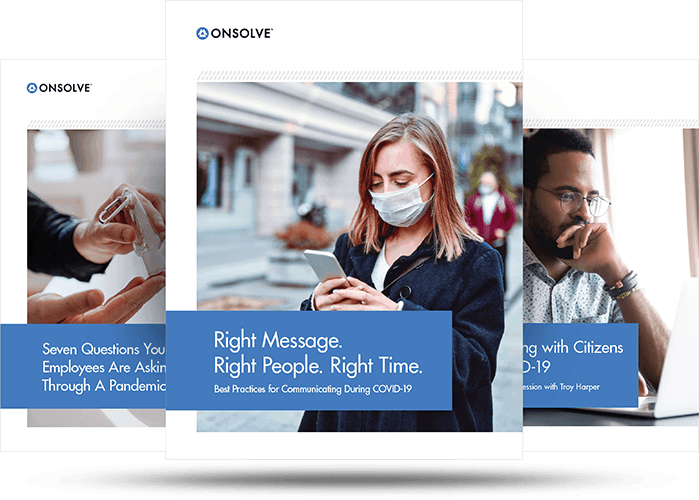A strong crisis response is supported by four core elements: four pillars of response. In our newly released COVID-19 Communications Kit, we’ve used these pillars to create articles, guides, white papers, templates and more to help you respond to the crisis we face right now, to help you plan for the next wave of COVID-19, and for pandemics to come.
First Pillar: Planning
We’re still in the middle of a pandemic. But that doesn’t mean there’s no longer any point in planning—and that applies especially to those companies who were caught flat-footed by the first wave. Yes: the first wave. All credible experts agree that there will—not may—be another wave as winter arrives. So even if you didn’t have a plan in place when COVID-19 emerged, now is the perfect time to get started. There’s a process and a methodology to creating a Pandemic Incident Response Plan. We talk about that planning in the COVID-19 Communications Kit: from making initial assumptions, to creating the Pandemic Response Task Force, to resource identification, and so much more.
Second Pillar: Best Practices
Best practices span organizations, disciplines, planning, communications and more. From dealing with customers and shareholders, to plan development, to types of messages—there are best practices that can be applied to each. And there are many credible and knowledgeable guides available for those best practices: our own included. But, remember, best practice guides are always just a first step. You must add to them based on your own successes, and create your own best methods for planning, responding and recovering from COVID-19.
Third Pillar: Communication
Frequent communication with citizens, shareholders, employees—all the stakeholders in your business—is an imperative during a pandemic. Creating all that content on an ad hoc basis is an unreliable and resource-intensive method. Rather, take the time—make it a critical part of your Pandemic Incident Response Plan—to mark out known milestones and events that occur during a crisis, and prepare, well before they’re needed, good-to-go templates for each projected event. We’ve started the ball rolling with our own templates covering initial announcements and instructions, stay-at-home orders, HR policies, legal requirements—and a great deal more.
Fourth Pillar: Expertise
The final pillar is the most important: expertise. You must probe and explore the insights of experts on issues of pandemic response. Here at OnSolve, we have a staff of experts; many of our customers hire outside expertise. To share some of our team’s insights, we asked Troy Harper, our General Manager, Public Sector, and Cheryl Carmel, Vice President of Security, to sit with us and answer important questions about communications, security, media and more.
The Full Story
It’s critical that your plans and responses be supported by strong knowledge, smart planning and perfectly targeted communications with your citizens, your customers, your employees and so many more.

Your Crisis Communication Kit for COVID-19
To learn more about the pillars of crisis response, download our comprehensive COVID-19 Communications Kit.
Download The Kit

